Wyoming hides pockets of time where neon still hums at dusk and main streets feel neighborly, unhurried, and wonderfully familiar.
If you have ever wished to step into a black-and-white postcard, these towns deliver the look and pace of the mid century without gimmicks.
Architecture, signage, and civic routines quietly resist the rush of the modern era, inviting slow walks and longer conversations.
Keep reading to discover the Wyoming spots that still groove to a 1950s beat, and map out a road trip that feels like stepping back in time.
1. Little America
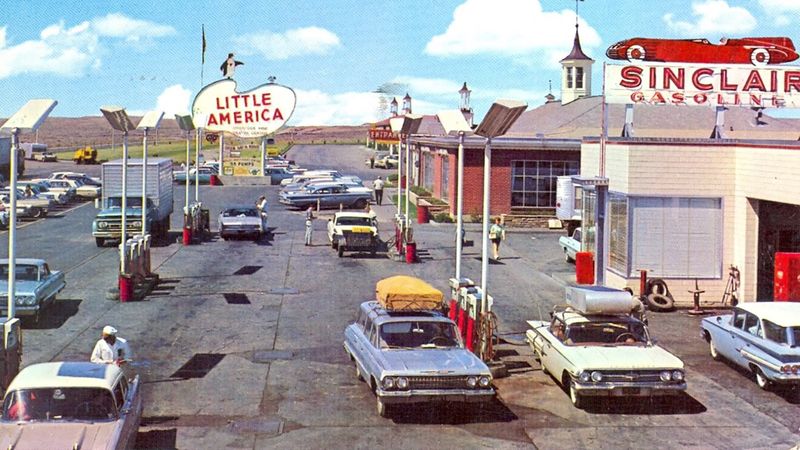
Once just a highway stop, Little America in Sweetwater County still looks like mid-century Americana, and that is exactly why road trippers keep pulling in. The lodge-style motel buildings set around mature pines feel like a classic motor court, with tidy lawns and wide parking bays that make arrival feel effortless.
Vintage-inspired signage glows softly after sunset, and the lobby embraces warm wood tones and roomy lounge seating that turns a pit stop into a pause. Families stretch their legs on broad sidewalks, kids race to count the flags, and truckers swap route notes near the fuel islands.
Despite updated services, the layout keeps its original spirit, straightforward and human scaled. The convenience store favors simple trip essentials, postcards, and Wyoming souvenirs, not flash.
For a quiet photo, step toward the main entrance where the long canopy and clean geometry frame a scene that could be a mid century postcard.
As travelers stream along Interstate 80, Little America offers a comforting constant in a fast corridor. It remains the kind of place where a night’s rest feels unhurried and the morning still starts with open skies.
2. Ten Sleep
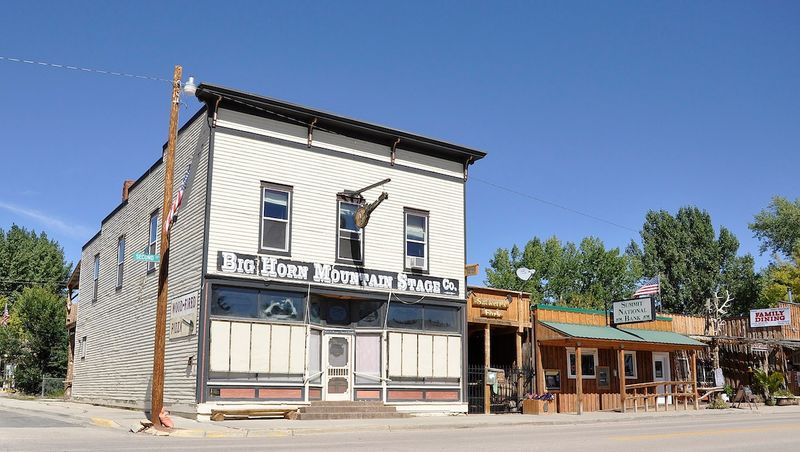
Ten Sleep sits where the Bighorn Mountains loosen into ranch country, and the small grid of streets preserves a frontier-main-street look that reads like a mid century snapshot. The Ten Sleep Mercantile remains a friendly hub, shelves stacked with practical goods and trail chatter floating between the aisles.
False-front facades, wood trim, and long porches stand shoulder to shoulder, inviting a slow wander under the afternoon light. On many weekdays you will hear little more than boots on boardwalks and the distant murmur of the creek. Climbers and anglers filter through, yet the town’s calm cadence holds steady.
Hand-lettered windows advertise hardware, coffee, and maps, proof that daily life still orbits local needs. Summer events fill the park, then everything settles again, as if the clock forgot to advance.
Scenic drives sweep to Paintrock Canyon, but back in town the scene is a tidy mix of pickups, bicycles, and a school marquee. T
en Sleep does not try to be a museum, it simply kept its bones and useful storefronts. Stand along Main Street in the late light, and the colors, the quiet, and the squared-off roofs make it easy to imagine another era.
3. Atlantic City
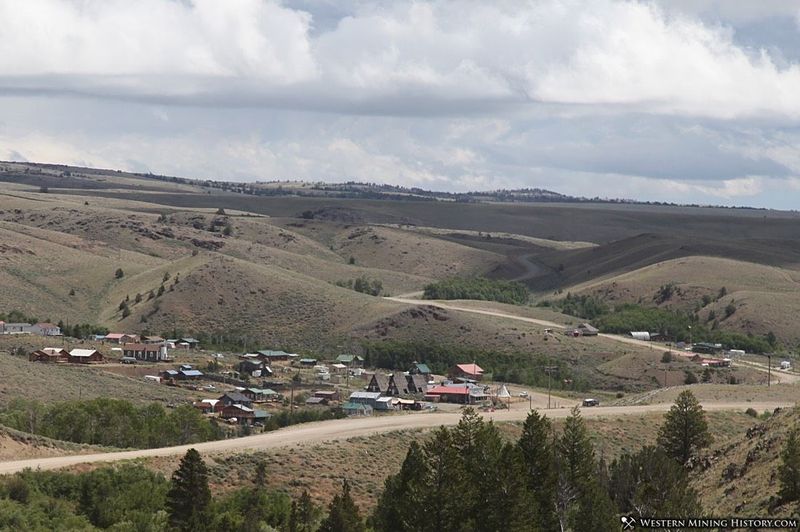
Atlantic City, tucked in the South Pass mining district, looks every bit like a lived-in ghost town, with dirt lanes threading between cabins and weathered false fronts. Old mining structures scatter the hills, and the sagebrush seems to lean into the wind the way the buildings do.
Residents keep a simple rhythm, greeting visitors who arrive for the history and the stark beauty. Gravel crunches underfoot as you explore the compact center, where hand-hewn logs and sun-faded paint tell the story better than plaques.
The town is not staged, it simply persists, and that authenticity creates the chill of stepping backward through time. Nearby trails lead to remnants of stamp mills and homestead sites, while pronghorn watch from the ridges.
Cell service blinks in and out, which helps the quiet feel earned. When the afternoon light flattens the landscape into silver and brown, Atlantic City turns cinematic.
The appeal here lies in textures and timeworn lines, not polish, and it rewards slow walkers and keen eyes. If Wyoming has a place that whispers the 1950s while remembering the 1880s, this is it, steady and unvarnished.
4. Buffalo
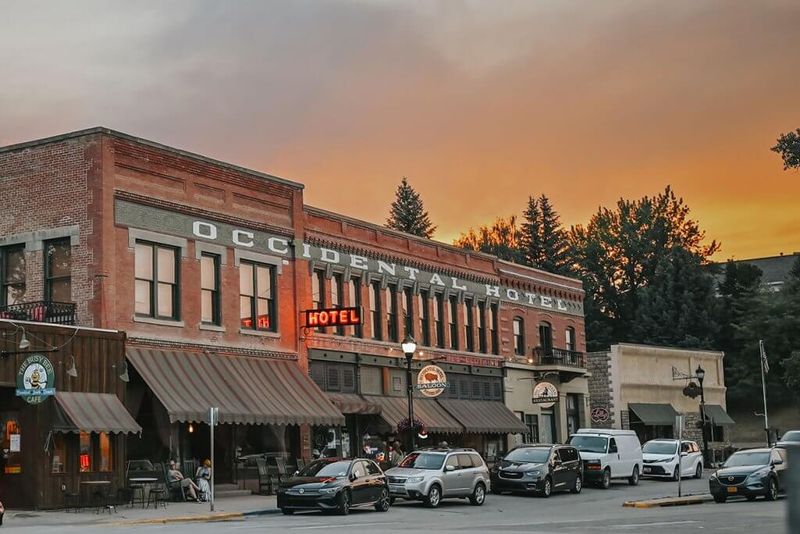
At the foot of the Bighorn Mountains, Buffalo keeps a main street lined with brick and stone that frames the town’s long story. The Occidental Hotel anchors the scene with polished woodwork and period details, a gathering point that doubles as a living museum.
Antique shops, outfitters, and galleries fill ground floors with window displays that lean classic rather than flashy. Sidewalks are wide, crosswalks short, and strolling feels natural, especially in the soft evening light.
Local events spill out of Clear Creek Square, then migrate to shaded benches where conversations stretch unhurried. The town’s historic district integrates modern services without unsettling the old texture. Visitors drift in for the mountain access, but many stay to linger under wooden awnings that give respite from the sun.
If you wander a block off Main, residential streets present tidy porches and mature trees that complete the picture. Everything adds up to a place that values steadiness over novelty.
In a state known for space, Buffalo proves a downtown can be both compact and timeless, with every doorway offering a view into Wyoming’s layered past.
5. Wamsutter
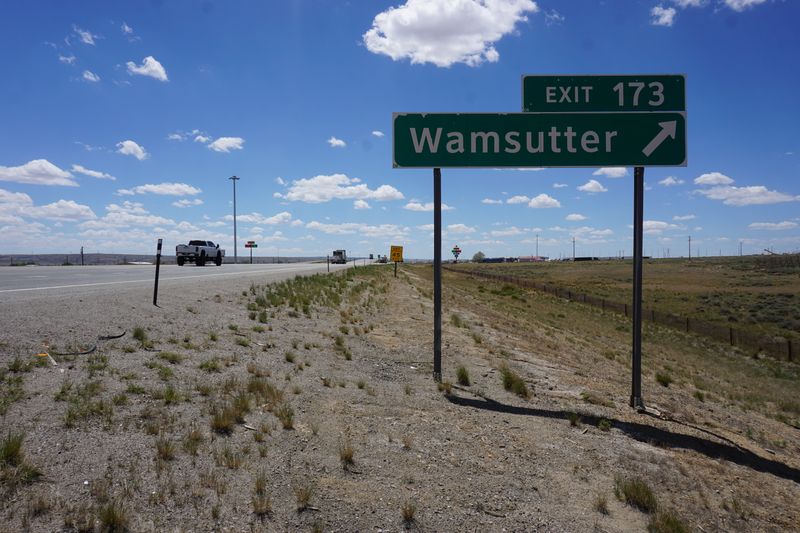
Wamsutter, set amid the Red Desert, presents a sparse main corridor where sky and horizon do most of the talking. Low-slung motels and practical services face the highway like a string of outposts, each sign clean and readable against the wind.
The town feels purposeful, built for travelers and workers who cross the open country, with layouts that prize parking space and visibility. Step back and the scene becomes remarkably cinematic, a lesson in scale and light. In the evening, neon flickers to life, reflecting on long windbreaks and the sides of parked rigs.
The few cross streets carry compact houses and utility sheds, the sort of grid that made sense when traffic was lighter and patience was longer.
You can still see how road trips once unfolded, with a straightforward stop, a room close to the car, and an early roll-out into empty miles.
There are no frills, and that is the point. In Wyoming, towns like this keep the road honest, reminding travelers that the West remains big. Wamsutter holds its place with quiet resolve, a waypoint where time does not hurry.
6. Lusk
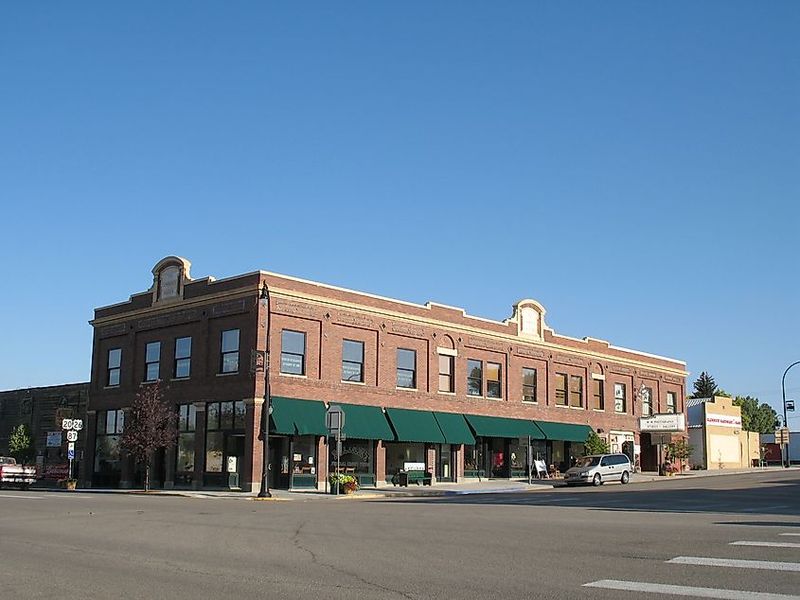
Lusk is ranch country at street level, with storefronts set close to the curb and a courthouse square that still feels civic. The Niobrara County Museum preserves local stories, while Main Street carries hardware displays, clothing racks, and simple window lettering that anchors a daily routine.
Traffic remains light, and the rhythm invites you to pause at crosswalks and look up at modest facades. Many buildings retain mid century lines, clean parapets, and trimmed cornices. Residents wave from pickups, then slip into the post office or library, where notice boards still matter.
If you are a walker, the grid is compact enough to loop easily, taking in murals and tidy residential blocks. There is a steadiness to the place, a willingness to do what works without fuss. Evening light warms brick and stucco, and you can hear the quiet hum of small-town life.
Wyoming’s big sky makes everything feel spacious, yet Lusk keeps the focus on people and chores. The result is a town that wears its past gently, welcoming visitors who appreciate a slower gear and clear sightlines.
7. Saratoga

Saratoga leans into restful tradition, with hot springs shaping a small-town routine that prizes calm. Low-rise motels and glowing neon give evenings a postcard feel, while the river adds a steady background hush.
Boardwalks and sidewalks meet at tidy corners, and historic signs point to the bathhouse and parks where locals gather year-round. Visitors come for the pools, but the charm shows up in the details, like retro lettering on lodge signs and benches placed for conversation.
A morning walk passes brick storefronts and simple gables that keep the skyline low. The pace encourages browsing in shops that stock gear, books, and crafts for real use rather than novelty. After sunset the streets mellow, and porch lights flicker on across quiet neighborhoods.
Wyoming travel often favors drama, yet Saratoga thrives on small comforts and practical hospitality. The town feels both old and ongoing, sustained by routines that never stopped working.
Spend a day here and the measure of time becomes steam, footfalls, and the soft glow of signs guiding you back to the heart of town.
8. Greybull
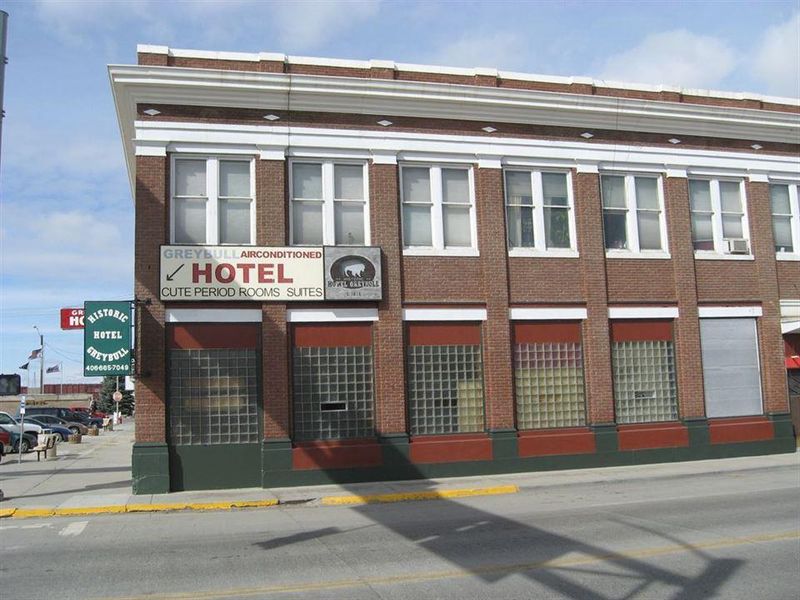
Greybull grew where rail and highway meet, and the built landscape still follows that logic with drive-up motels and vintage service stations arranged for easy access. The Museum of Flight and Aerial Firefighting sits nearby at the airport, a reminder that aviation has long shaped local work.
Along the main drag, tidy courtyards and hand-painted signs add personality without clutter. The grid is straightforward, which makes exploring on foot simple and satisfying. Windows reveal barber chairs, repair benches, and shelves of parts, a catalog of everyday trades that never left town.
When the light goes low, the older motel marquees glow softly, guiding travelers to quiet rooms and angled parking. Railroad heritage lingers in murals and preserved equipment, and you can trace that line through the modest brick and stucco facades.
Greybull does not chase spectacle, it provides continuity. In the larger Wyoming map, it functions as a dependable stop with honest architecture and friendly storefronts. Spend an hour and the rhythm takes hold, a calm hum that feels almost mid century in its balance of movement and rest.
9. Thermopolis
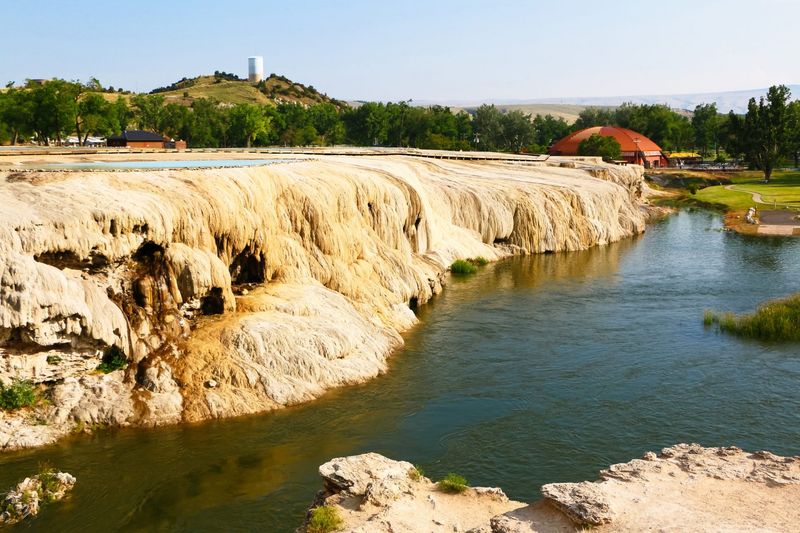
Thermopolis blends classic roadside ease with natural wonders, and the result echoes a mid century family road trip. Hot Springs State Park frames the town with terraces, walking bridges, and a landmark entrance that begs a photograph.
Downtown storefronts keep a practical footprint, with readable signs and wide sidewalks that welcome lingering. The Wyoming Dinosaur Center adds a dose of discovery, and the museum’s exhibits pair well with the region’s layered geology.
Many shops close early, which reinforces the unhurried tempo and keeps the evenings quiet. Motels, inns, and the bathhouse carry retro cues in lighting and materials, offering comfort without flash. Cross the river and you will find picnic shelters and trails where steam drifts above clear water.
The whole layout encourages simple routines, like a morning soak followed by a calm stroll to the bridge. In a state that prizes open space, Thermopolis pairs small-town scale with big natural features. It feels familiar in the best way, like a childhood route revisited and found exactly as you remember.
10. Shoshoni
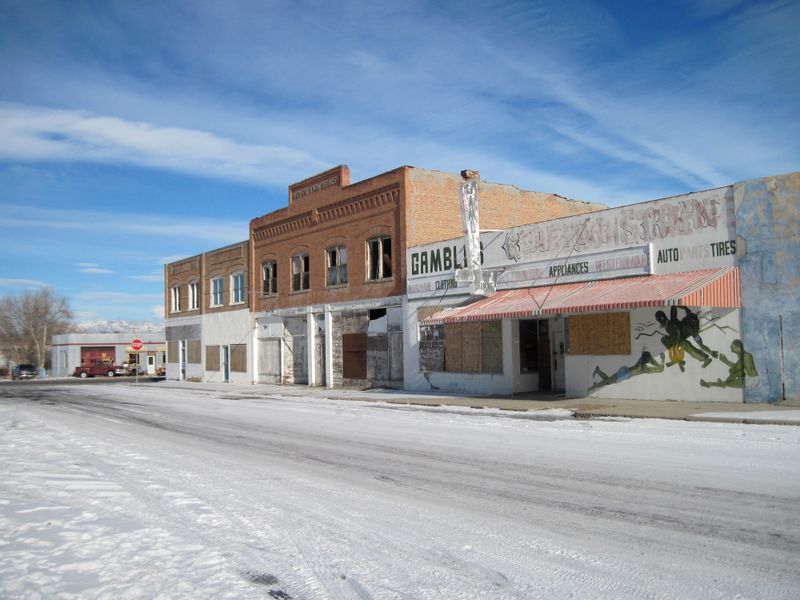
Shoshoni sits at an important junction, yet the center of town remains hushed, with pared-back storefronts and faded signage that hint at busier days. The grid is broad, the buildings low, and the gaps between them amplify the wind and the light.
Murals and historic markers recall the railroad era, while the present moves at a measured pace. A few classic motel exteriors and canopy-covered entries speak to the motor age that shaped this stop.
Travelers heading toward Boysen Reservoir often pass through, but a short walk reveals textures worth noticing, from sunbaked brick to hand-lettered glass. The absence of clutter gives the streets a film-set quality, like a scene waiting for extras.
Up close, you see caretaking in painted trim and swept doorways, evidence of quiet pride. As the sun drops, long shadows turn the stucco and metal siding into bands of color.
In Wyoming terms, Shoshoni is an honest outpost, built for function and endurance. Spend a little time on those wide corners and you may hear the echo of another decade, uncomplicated and steady.
Dear Reader: This page may contain affiliate links which may earn a commission if you click through and make a purchase. Our independent journalism is not influenced by any advertiser or commercial initiative unless it is clearly marked as sponsored content. As travel products change, please be sure to reconfirm all details and stay up to date with current events to ensure a safe and successful trip.